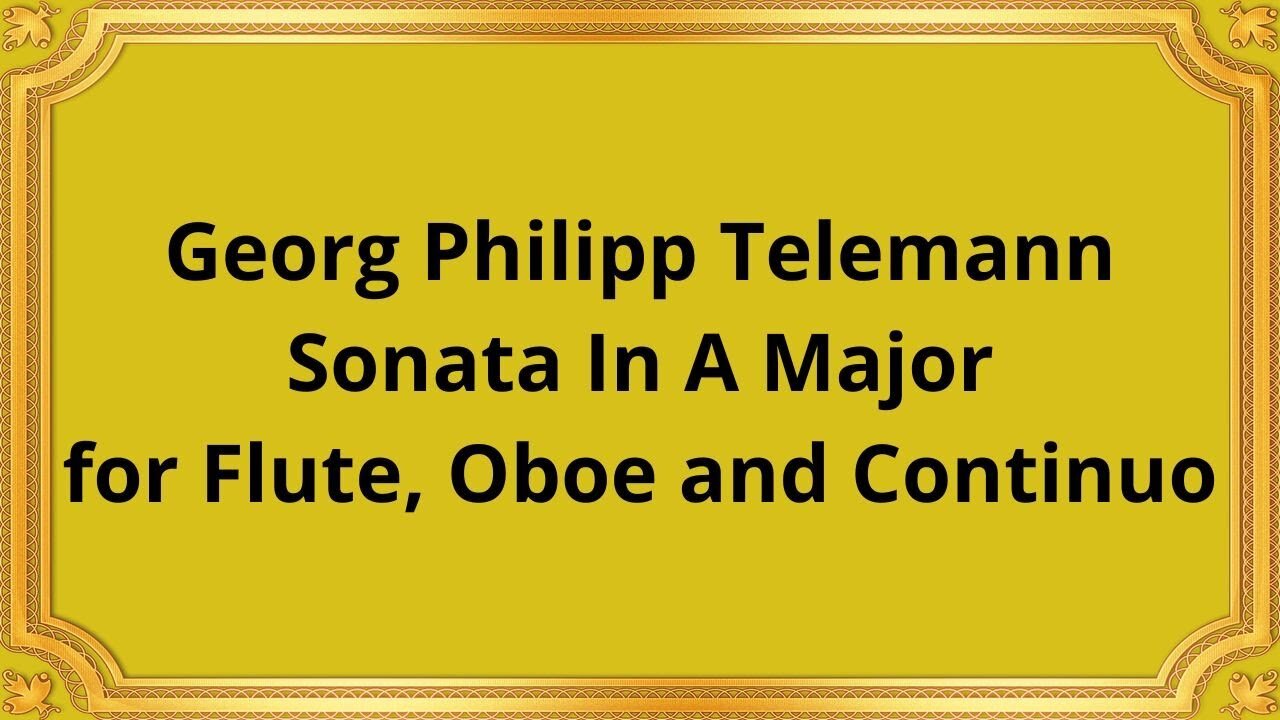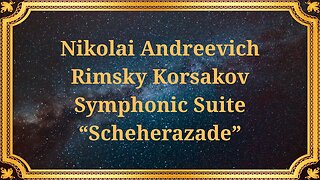Premium Only Content

Georg Philipp Telemann Sonata In A Major for Flute, Oboe and Continuo
#Telemann #ClassicalMusic #SonataInAMajor #Flute #Oboe #Continuo #MusicalComposition #BaroqueMusic #InstrumentalMusic #ChamberMusic
BAROQUE ENSEMBLE OF PARIS
Georg Philipp Telemann, a prominent German composer of the Baroque era, left behind a vast and diverse body of work. Among his numerous compositions, the Sonata In A Major for Flute, Oboe, and Continuo stands as a remarkable testament to his mastery of musical composition.
Telemann's Sonata In A Major for Flute, Oboe, and Continuo, also known as the Trio Sonata, is a chamber music composition written in the early 18th century. It consists of four movements, following the traditional pattern of the Baroque sonata: slow-fast-slow-fast. The piece showcases the interplay of three distinct voices: the flute, the oboe, and the continuo (usually played by a harpsichord or cello).
The Sonata In A Major presents a rich tapestry of melodies, with each instrument taking turns to express its own unique melodic lines. Telemann's melodies are graceful, lyrical, and often ornamented, showcasing his gift for crafting memorable musical phrases.
A hallmark of Baroque music, counterpoint refers to the art of combining multiple melodic lines in a harmonically pleasing manner. Telemann skillfully weaves together the flute, oboe, and continuo, creating intricate contrapuntal textures that enhance the overall musical experience.
The harmonies in this sonata are characterized by a balanced blend of consonance and dissonance. Telemann skillfully navigates through different tonalities, creating moments of tension and resolution that captivate the listener's ear.
Telemann's Sonata In A Major exemplifies the emergence of chamber music as a popular genre during the Baroque period. Chamber music, intended for intimate settings rather than grand performances, allowed composers to explore intricate musical interactions. This piece reflects the era's growing interest in the dialogue between instruments and the development of the soloistic capabilities of each.
Additionally, Telemann's Sonata In A Major showcases his innovative approach to instrumentation. By combining the flute and oboe, two wind instruments with distinct timbres, he creates a unique blend of colors and textures, enriching the overall sonic palette of the composition.
Conclusion:
Georg Philipp Telemann's Sonata In A Major for Flute, Oboe, and Continuo embodies the beauty and complexity of Baroque chamber music. Its melodic richness, contrapuntal interplay, and historical significance make it a valuable addition to the repertoire of classical music. By exploring this remarkable composition, listeners can appreciate Telemann's skill as a composer and gain a deeper understanding of the musical landscape of the Baroque era. As we continue to celebrate and explore the vast catalog of Telemann's works, the Sonata In A Major remains a testament to his enduring musical legacy.
You have the opportunity to support the channel:
https://destream.net/live/RadSiarAl/donate
https://www.buymeacoffee.com/6355radsiaral
-
 41:38
41:38
Classical music_Music Inspiration
1 month agoNikolai Andreevich Rimsky Korsakov Symphonic Suite “Scheherazade”
1751 -
 LIVE
LIVE
Badlands Media
9 hours agoBadlands Daily: August 25, 2025
2,578 watching -
 UPCOMING
UPCOMING
Major League Fishing
3 days agoLIVE! - Fishing Clash Team Series: Challenge Cup - Day 2
500 -
 35:18
35:18
The Quiet Part
2 hours agoMAID Is Coming for the Mentally Ill — But This Could Change Everything
67 -
 LIVE
LIVE
LFA TV
14 hours agoLFA TV ALL DAY STREAM - MONDAY 8/25/25
4,765 watching -
 LIVE
LIVE
Surviving The Survivor: #BestGuests in True Crime
1 hour agoLIVE Court: Wendi Adelson Testifies Against Mom, Donna Adelson, in Dan Markel's Murder Trial
256 watching -
 LIVE
LIVE
JuicyJohns
1 hour ago $0.05 earned🟢#1 REBIRTH PLAYER 10.2+ KD🟢
100 watching -
 1:14:57
1:14:57
JULIE GREEN MINISTRIES
3 hours agoRUSSIA IS ABOUT TO RELEASE SOMETHING THAT WILL CRUSH THE ESTABLISHMENT
65.5K169 -
 LIVE
LIVE
GritsGG
1 hour agoWin Streaking! Coloring Hair at End of Stream! Most Wins 3435+ 🧠
33 watching -
 1:33:58
1:33:58
Welcome to the Rebellion Podcast
20 hours ago $0.03 earnedMonday Funday - WTTR Podcast Live 8/25
12.2K1